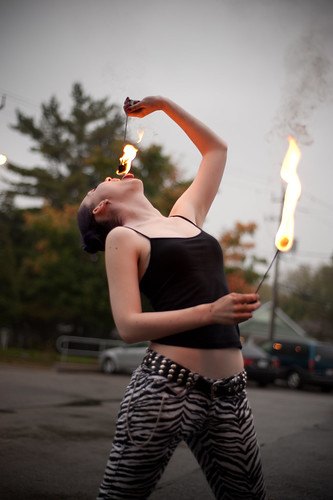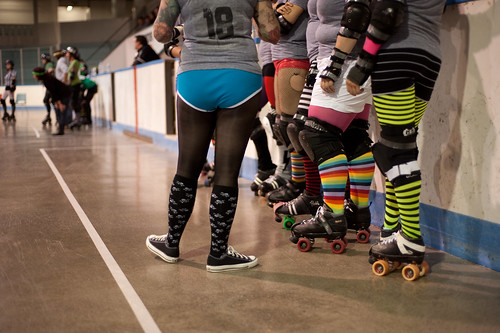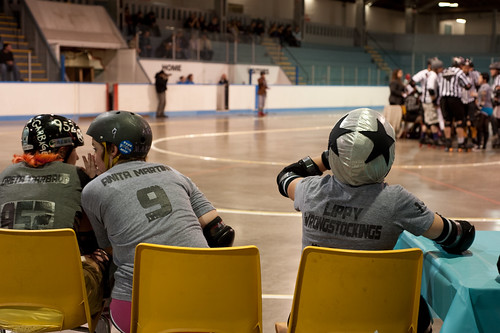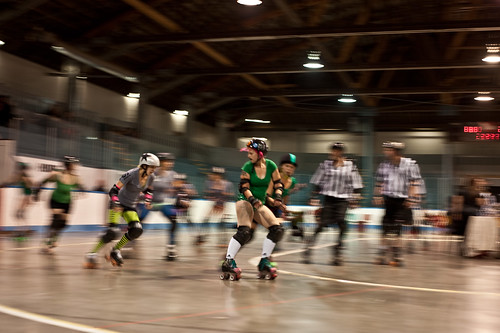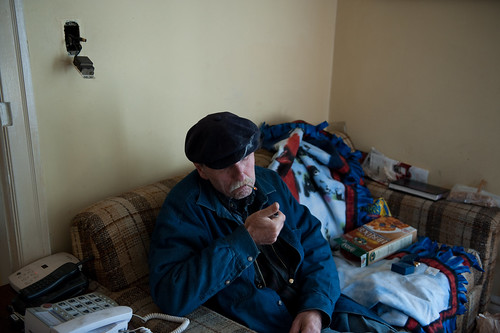The last time we went to South Africa in January 2007, we decided we would fer sher go back in the first half of 2010. Part of me even hoped we might be go back before 2010 too, but it hasn’t happened. And now 2010 is approaching fast, and I’m starting to think we might not go back for a while more. The trip is just so long and gruelling, and the thought of making it with a 4-year-old makes me want to stay home. It’s also expensive, and now that I’ve been entertaining thoughts of going back to school, and now that my sister and her family are moving to the Dominican Republic for three years, I’m starting to wonder when we might actually get back to SA. And that makes me very sad.
Last weekend we watched District 9. It was such a treat to hear all the authentic South African accents, and see the real landscape around Johannesburg. I read a review that talked about how the movie is an allegory for apartheid, or the holocaust or any other major oppression in history. But I think it’s more specific than that. It seems very much set in post-apartheid South Africa, although there are certainly A LOT of echoes from apartheid. (The title itself is a reference to District Six, which was once a thriving multi-cultural neighbourhood in Cape Town, until the Group Areas Act designated it as whites-only, and all the buildings that belonged to non-whites were razed, and all the non-whites were moved elsewhere. The area pretty much remained a wasteland, although the government is building new houses there.) Also, there were just so many South Africanisms and inside jokes – so my husband told me because a lot of them went over my head – that I think although the movie has wide appeal, it’s really directed at South Africans.
A few weeks ago at the uni library, I found some books on David Goldblatt’s photography, which I first saw in the South African National Gallery in Cape Town. One of his colour shots was hanging, of a domestic worker sitting in her employer’s house, and I just loved it.
Anyways, one of the books, David Goldblatt: Fifty-One Years, features an interview with him, critical essays about his work, other essays about South African arts generally, and of course his photos. Lots and lots of his photos. This particular quote no doubt influenced my experience of District 9:
“After about 1968, I realized that the kind of work I was doing was so internal to South Africa, so steeped in our obsessions and perversions, that without involved explanations it meant very little to outsiders. My dialogue, to the extent that it went beyond myself, was with fellow South Africans. My dispassion was an attitude in which I tried to avoid easy judgements. This resulted in a photography that appeared to be disengaged and apolitical, but which was in fact the opposite.”
Here are some more quotes from the interview that are still rolling around in my head:
On living in apartheid:
“[...] over time it grew evident that the real conflict was [...] how to square one’s conscience with being a white in this country. This was not hair-splitting. It was a moral dilemma that arose in numerous ways in daily life. Was one to become an activist, a saboteur, a worker in the underground? I had neither the conviction nor the guts for that. [...] Once I became seriously engaged in it, photography became my way of being politically active. It was a political act. I must be careful to tell you, though, that I would not allow my photographs to be used for political purposes. [...] I came to learn that the messages that editors, propagandists, and political bodies wished to attach to my pictures rarely corresponded with my own concerns. I took these photographs because I was engaged in a dialogue – between the subject and me.”
On his approach to photography
“I came to realize that I was not cut out for news work. Editors wanted photographs of events, and I saw that as a photographer I wasn’t all that interested in events. I was and am far more engaged by the states of being that lead to events, by the conditions of society rather than the climactic outcomes of those conditions.”
“My photography became a political inquiry, an interest in real things. My concern was not to make “interesting photographs” but to probe the immediate world I lived in.”
“Long ago I tried to make pictures like those that came from Europe, soft and beautifully modulated. It used to break my heart – I could never get my pictures to look like that. Then, in 1961, I realized that it had to do with light. We have a lot of it in South Africa, and it is often sharp and harsh. So instead of fighting our light, I began to enjoy it and to work with it. I photographed from within rather than as if I were visiting from somewhere else.
“At the same time, my work became more oblique. I sought out irony and tried to impregnate pictures with a sense of it, for it often revealed the nuances and complexities of our life in South Africa.”
More on apartheid and his sense of place
“It was impossible to live in this country and be separate from the system. You couldn’t do it. The system penetrated every aspect of life here. [...] You were complicit simply by being here. By breathing the air. In living ordinary decent lives, paying the rent, sending kids to school, taking jobs, catching trains, blacks were complicit in their own oppression, and whites, even if they opposed the system, by living within it were complicit in the subjection of blacks. Unless, that is, they were activists prepared to go to prison and die for their beliefs.”
And finally, he had some comments about his methods. He says this about working in Soweto during apartheid: “A white mane in those places at the time attracted a great deal of attention, from both the populace and the security police. I developed an approach that usually disarmed both. I unambiguously declared my presence and purpose, which was to photograph ordinary life. I adopted a slow and formal photography, no shooting from the hip, the camera invariably on a tripod, everything upfront and transparent. Ordinary onlookers soon got bored, while the police seemed not to know what to make of the sheer banality of what I was doing.”
Later on in the book are essays by JM Coetzee and Nadine Gordimer, among others. Nadine Gordimer went out with Goldblatt on some of his shoots and she had this to say: “When one looks at some of the astonishing revelatory Goldblatt photographs it is in immediate response difficult to believe the fact that he never takes photographs of people surreptitiously, except in the anonymity of the crowd. Unthinkable for him to do a Walker Evans, hiding a camera between his coat buttons on a New York subway train. Sometimes when working with him, particularly in the Transkei among rural people, I found myself amazed and humbled by the way in which he would not seize his perceived wonderful moment because the subject whose image presented itself did not want to be photographed. Goldblatt always asked permission, and if he was refused, gave thanks – his respect for the decision – and walked on.
“I saw later, in the evidence of the photographs he did take how superficial as well as ethically doubtful my regret for “missed” images was. I think of the old woman in her mud home; her contemplated grace of ignoring the process of photography she had consented to. Susan Sotag quotes Brassai saying he didn’t want to catch subjects off guard in the hope that something special would be revealed of them. For Goldblatt, like Brassai, that something special in the subject doesn’t have to be caught off guard; if it is there, it is Goldblatt’s challenge to himself to find it even when the subject is “on guard”. He does not use the camera as a licence, freeing the photographer from any responsibility towards the people he photographs.”
